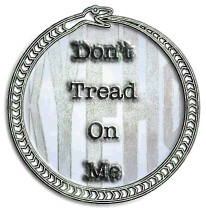|
|
entry index
Price of incentivesWhat happens when agriculture goes back
to the free market?
There's a really great article at TCS
Daily.
Once upon a time, in a country way, way down under, the government dismantled its system of agricultural subsidies and supports. Initially, cries of outrage and disbelief were heard from farmers all across the land. For more than 20 years, farm assistance had steadily increased, peaking at 33 percent of total farm output (about double the level of assistance in the U.S. today). Then, with one swift and decisive decree, all subsidies were eliminated. The transition period, which lasted about 6 years, was not easy, but it was less painful than expected. The government predicted a 10 percent failure rate, but only 1 percent of farms went of business. Government assistance during the transition period was limited to one-off "exit grants" for those leaving their farms, financial advice, and the same social welfare income support afforded to all citizens. The fortune of farmers now depended on their ability to meet consumers' demands. Overproduction no longer occurred. One year, under the subsidy regime, six million lambs were rendered into fertilizer because no one wanted them; sheep farming had been the crown prince of the subsidy king. Without subsidies farmers were forced to diversify and produce those goods that were most sought after in the marketplace. Sheep stock decreased, while the number of dairy cows increased. Over time, the agricultural sector diversified into not only new crops and livestock, but also rural tourism. Worth your time and thought. 
Posted: Wed - May 23, 2007 at 03:37 PM
|
 Pagan Vigil
Pagan philosopher, libertarian, and part-time trouble maker, NeoWayland watches for threats to individual freedom or personal responsiblity. There's more to life than just black and white, using only extremes just increases the problems. My Thinking Blogger Nominees
Recent
Comments Search
Categories
Guest
Articles Interested in Pagan•Vigil hosting your articles? I'm always looking for tantalizing content that makes people think. Look here for details. E Pleb Neesta AdSense
Pagan Vigil assumes no responsibility for the advertisement content provided by Google, which is neither selected nor endorsed by NeoWayland.
NeoLinks
The News Right Now Radio Free Europe/Radio Liberty
Reason Magazine - Hit & Run Sunni Maravillosa and the Conspirators
Hammer of Truth Life, Liberty and the Pursuit of... Lady Liberty's Constitution Clearing House Law Enforcement Against Prohibition
no authority Center for a Stateless Society
Tammy Bruce.com Latino Issues: A Conservative Blog
The Nation
RealClimate
Papers, Please!
Letter from Hardscrabble Creek
You Are Not Alone A Big Idea from Eject! Eject! Eject! Fully Informed Jury Association World's Smallest Political Quiz Animated Introduction to the Philosophy of Liberty Institute for Liberty and Democracy
World of Ends 60 Second Refutation of Socialism, While Sitting at the Beach from Coyote Blog
World Religions - Religious Forums Ontario Consultants on Religious Tolerance
Who links to me? NeoBlogs
Books
Listmania - Liberty Basics
Legal
All Guest Articles are © copyright by their respective authors for the date given and subject to the specific restrictions and permissions as stated in that article entry. Guest Article restrictions and permissions are specific to each article and may not be applied to another Guest Article.
Views and opinions expressed in Guest Articles do not necessarily reflect those of NeoWayland. Content from other sources is quoted under the fair use laws of the United States with clear reference to the source material. Unless otherwise noted, all other content at :
www.paganvigil.com Additional Redirect/Frame pages may be found at these web addresses:
members.aol.com/ If your web browser does not show one of these addresses, then this page being used without permission of the author. The views expressed by NeoWayland are his own and do not represent any other enity. NeoWayland freely accepts individual and sole responsibility for his words and actions. XML/RSS Feeds
Statistics
|